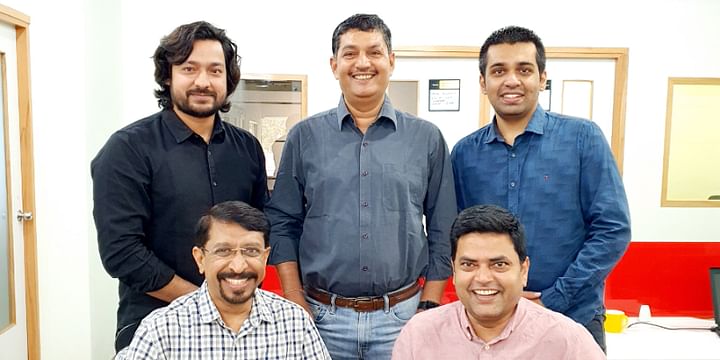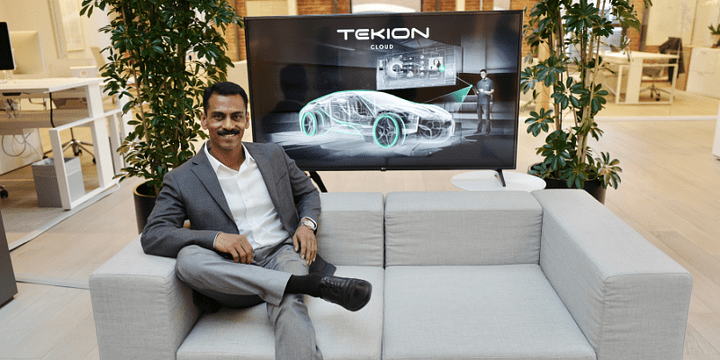Robert Kabera – The goal is to develop AI tools that will help energy distribution companies respond more quickly to emergency and crisis situations.
Dr. Sayonsom Chanda was no stranger to strong winds and relentless rain, which knocked out power for hours, days, and even weeks when he was growing up in a middle-class family in Kolkata and Midnapore, West Bengal, India. In 2007, he and his family survived the devastation of two storms: Sidr and Odisha.
Robert Kabera (Sync Energy Co-Founder & COO)

It was one of the core reasons for him to start Sync Energy in 2017. The company develops AI software that aids in emergency and disaster preparedness planning for electric power distribution companies.
The platform allows utilities to better anticipate and manage customer outages, as well as be more informed about the consequences of a crisis before it happens. As a result, electricity companies will be able to cut expenses linked with emergency-related power outages.
Starting up in the space
“We only had one emergency lamp,” Sayonsom remembers. “When the lights would go out in the evenings, I’d unplug it and set it on the kitchen counter so that my mother could have some of that light while I could use a part of it to finish my homework.”
When he was finishing his PhD at Washington State University, Sayonsom crossed paths with Robert Kabera, a Stanford University graduate who was also studying under the same professor – Prof. Anurag K Srivastava.
Sayonsom, with his enhanced understanding of the electric utility sector and prior experience with simulations and artificial intelligence, could identify bottlenecks and inefficiencies within the power sector after Hurricanes Harvey and Maria wreaked havoc across the southeastern United States and Puerto Rico in 2017.
Looking at what was needed
They attempted to figure out why so many lengthy power outages are unavoidable over the following few days. They learned that field engineers, operators, practitioners, and planners are disconnected from artificial intelligence and computing capabilities while discussing with Robert’s mentor at Stanford University, Michael Bernard, who spent his career in public safety and emergency response.
“That is why, in theory, many difficulties (such as long power outages) may be theoretically anticipated and resolved on paper much more readily than they can on the field,” says Sayonsom.
He understood he needed to create a tool that could forecast the power grid’s damage and provide authorities enough warning to ensure they were ready.
“We saw an opportunity and a major advantage to automate much of these computations so that engineers are less stressed and can focus on every utility engineer, lineman, crew, and first responders the ability to do simulation.” Sayonsom adds.
The workings
“We provide a no-code interface for electrical engineers, field personnel, and planners to perform sophisticated analytics, collaboration, and a comprehensive data-discovery platform. Our solution is built in such a way that any engineer, employee, or contractor in the electric utility sector may access AI-powered forecasts and insights when they need it.” says Sayonsom.
The firm claims to have established the first and largest repository of power system events called Events Intelligence (EI), which is a library containing thousands of historical data sets and over 350,000 scientific publications.
“We are the first to do it for utility resilience, recovery, and restoration issues. We launched a web-based user interface and smartphone apps for our analytics platform so that they may be utilized anywhere, any time.
The smart grid isn’t yet widely implemented, where predictive technologies linked to automation may help customers resume usage of their power sources very quickly.
If the electricity network is destroyed in a particular region of the world, and especially in rural eastern India, where multiple strong storms hit every year, all clients will be affected because there are few alternatives to backup and restore power using redundant networks.
It has also been linked to the spread of illness in animals, which puts humans at risk. This contributes to longer-term power outages, which eventually impact agriculture, small businesses, and the already weak financial position of rural people.
When the traditional power grid shifts into a smart grid, Sync has opened access to its damage predictive capabilities for first responders, emergency response organizations, state disaster planning departments, block development officials of rural areas, and academics to plan ahead for how many emergency or solar-powered lamps to provide, how many power banks are needed, if backup diesel generators will be required – when, where.
The tools will also be able to determine the maximum power output of the solar PV system and how much energy it can produce at any particular place, based on weather patterns. This will help you make decisions like determining whether or not your property is worth investing in solar panels. It is important to understand that they are merely predicting how much damage a cyclone, earthquake, fire, or even a cyberattack would do to the electric grid; nothing more.
What sets them apart?
“Unlike our competitors, our unique technologies provide component-by-component analysis of how each component of the power grid infrastructure will react to the emergency event. This enables us to provide analytics for the electric power grid at a very high resolution, which is second only to that of Google Earth Engine.” says Sayonsom.
The main clients are electric power distribution firms, which may be either public or private. Sync charges them an annual licensing fee to use its sophisticated cloud computing technologies. The cost is determined according to the size of simulations that the electric utility must perform on a regular basis.
Following the devastation of Amphan in West Bengal, Sync decided to offer its asset damage prediction technology for free to emergency response NGOs, rural block development officials, and other research organizations.
“Our main goal is to bring light into other people’s lives in any way we can, and to make catastrophes less dark and the recovery process less messy. We will go above and beyond to keep our mission.” Sayonsom adds.
The business model
Simulations-as-a-service provider Simulated Energy serves as a simulations-as-a-service provider. Sayonsom explains that the team considers the cost of performing simulated events to predict damage risk for one client to be its unit. He says: nAccording to an example, he says:
“The number of customers served by the utility and the amount of planning and emergency response activities completed are used in our revenue projections.”
“Our analytics may help prevent millions of dollars in disaster-related costs. For a strategic standpoint, we provide a significant financial benefit to the electric utilities.
The company’s revenue predictions are looking good for the foreseeable future, both because of the dangers that the power grid faces and the demand for dependable electric power.
Market and future
There are several data and energy business startups, including Enheroes, a data and energy company backed by Blume Ventures. Zenatix is an IoT-driven energy data analytics firm working in this area that is funded by Blume Ventures.
According to IDC, by 2020 there will be more than 28 billion devices with data exchange features.
“Our software is for mission-critical applications with no room for error. It took us four years of exhaustive study and development to produce the minimal viable product that was adequate for testing at an industrial scale,” says Sayonsom.
Sync will cost $400,000 in backend technology every four years, including the time invested by the co-founders to construct the predictive analytics brain.
The total cost of building and training the machine learning models was around $15,000, with front-end development expenses coming in at roughly $15,000. Cloud computing for developing and training the machine learning models costs money on an ongoing basis. A prominent US-based accelerator has helped the company raise funds.
For the previous two years, Sync Energy has worked exclusively with electric utility companies to make emergency response planning easier, smarter, and safer.
“The coronavirus epidemic has shown us how interrelated and mutually dependent we are. As a result, we recognized that true resilience necessitates inclusion, all-encompassing, and holistic.” says Sayonsom.
This year, the group is expanding to areas without smart grid infrastructures. It is assisting local authorities and emergency response teams by anticipating supply chain disruptions and providing them with planning and preparation tools to get through the hard days.
“We want to build a paradigm for modern, data-driven storytelling in order to help communities and organizations become resilient by anticipating what the worst thing that can happen to them is, and how we plan to assist them recover -before it happens. In addition to rapidly growing our predictive analytics platform, we’ll develop an optimal marketplace with vendors providing resilience-enabling goods and technologies, taking them directly to people and communities in need, and recruiting those who can assist.” says Sayonsom.









